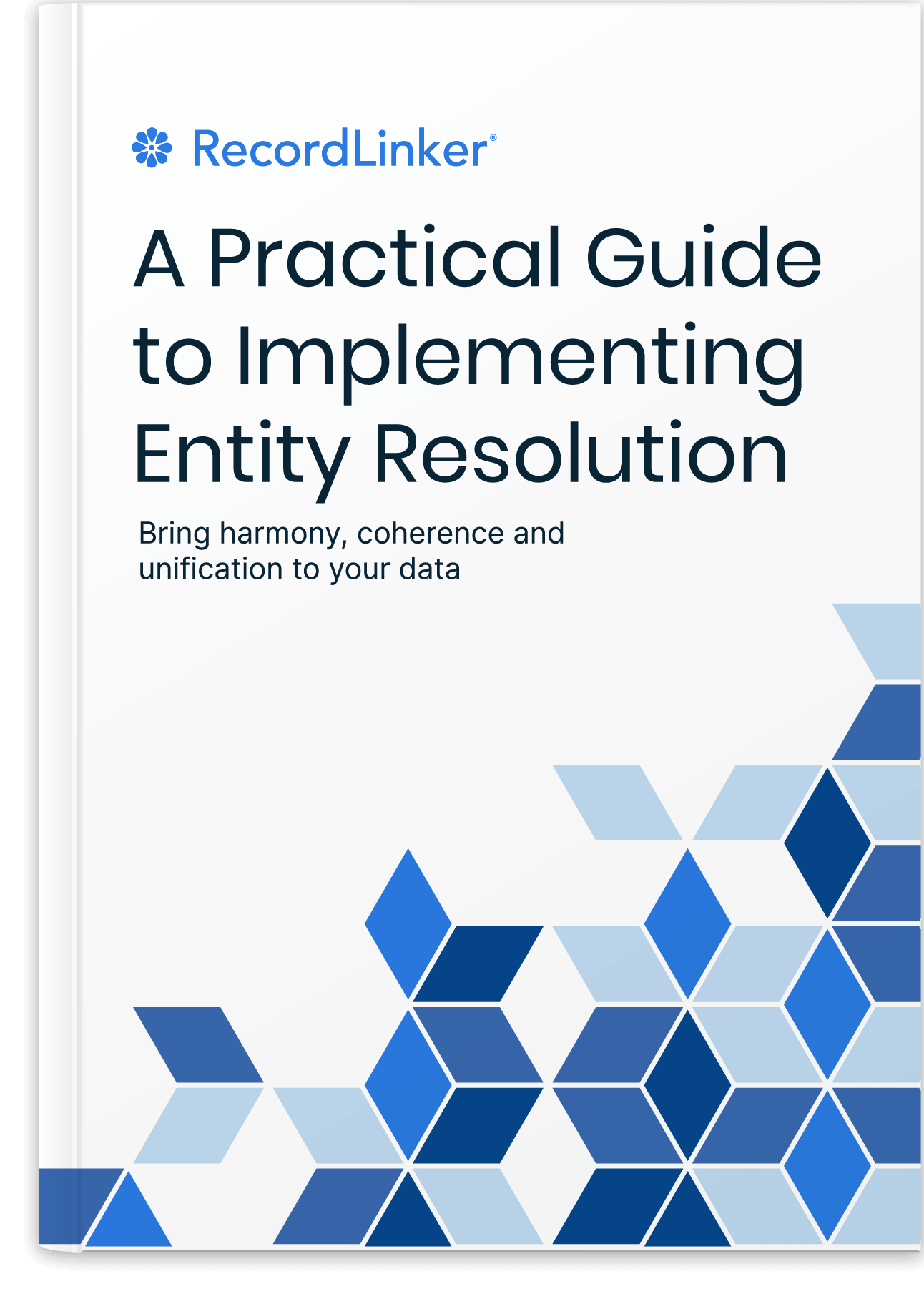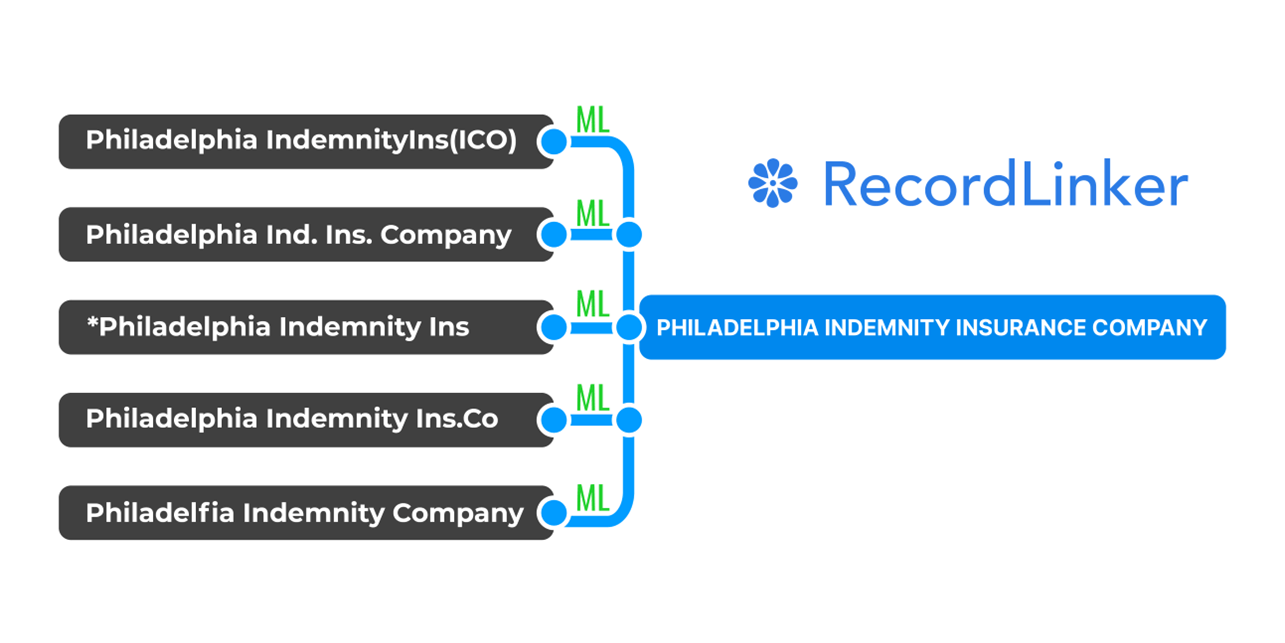Benefits of Customer Data Integration and Superior Data Linking

Reflecting on your organization’s data management practices, you’ve probably realized that there’s a lot of duplicate information floating around. This isn’t necessarily a bad thing–after all, it’s important to have multiple copies of important data in case one set is lost or corrupted.
However, it can become a problem when different departments are using different systems to store their data, and those systems aren’t able to talk to each other. Siloed decisions may lead to misunderstanding, office politics, and poorly understood stakeholder management, which leads to misaligned objectives, unrealistic expectations, and inability to sustain long-term business growth.
Cross-linking data is the process of linking together records stored in different systems. This can be done manually, by entering the relevant information into each system, or automatically, using software that is designed to connect different systems. Either way, the goal is to create a single, cohesive view of your organization’s data.
Data linkage spans way beyond just customer data. It may help your entire organization in establishing and analyzing objectives with proper expectations, and reliable analysis process. Discover different types of tools, and find tips for efficient business KPI analytics from disparate data sources!
Benefits of Customer Data Integration
There are a few key reasons why integrating customer data and cross-linking disparate records are important for organizations.
Alignment Between Depratments Relying on Customer Data
First and foremost, it helps to reduce duplicate data. When departments are using different systems, it’s easy for duplicate data to slip through the cracks. Cross-linking data ensures that each piece of data is only stored once, which saves space and makes it easier to keep track of.
Secondly, it makes data more accessible. When data is stored in multiple systems, it can be difficult to get a complete picture of what’s going on. Cross-linking data makes it easy to see all of the data that’s relevant to a particular task or project, which can save time and ensure decision makers are as well informed as possible.
Consistent, Reliable, Updated Customer Analytics
Finally, cross-linking helps to improve data quality. Keeping data accurate and up-to-date when it’s siloed across different systems is time-consuming and error-prone. When you link these pieces of data, you can clearly see when data has been updated, and by whom.
Together, the above benefits translate into a number of specific advantages for organizations. We’ll go through just a few of the more specific impacts that customer data integration can have, spanning everything from marketing, through security, to company culture.
By ensuring that your data flows and creates unified customer profiles, you give your organization a source of reliable, constantly up-to-date data to act upon.
Customer Data Segmentation and RFM Analysis
Organizations that build a base of accurate 360 customers profiles can further analize them to identify segments.
Integrating customer data can enable reliable RFM (Recency, Frequency, and Monetary Value) scoring. By employing this analytic tactic, you can identify segments like champions, loyal, potential loyalists, promising, need attention, at risk, cannot lose, and new customers.
By digging deeper into data you may discover that there are segments of customers that are hurting your business or a particularly profitable, but overlooked groups. You can deepen your analysis to extract characteristics that link these customers, and allow you to allocate marketing budgets where they produce the greatest return on investment, or decide to spend more to win new customers, knowing that ad spend will return as customer lifetime value (CLV or LTV).
Highly Targeted Marketing Tactics
When you combine customer data from multiple sources, including social media, email, website interactions, customer service logs, and purchase history, you gain a more complete picture of who your customers are. In this sense, cross-linking data on customer data can help organizations to better target their marketing efforts and produce more effective campaigns.
Free Book: Practical Guide to Implementing Entity Resolution
Interested in implementing an in-house record matching solution with your own development team without using any outside vendors or tools?

Imagine being able to see which customers have made purchases from multiple channels, and how they have interacted with your brand through multiple touchpoints. You would be able to start identifying opportunities to improve the customer experience, make it more seamless, and increase customer loyalty.
In addition, cross-linking data can help organizations gain insight into which customers are more more price-sensitive, which products tend to bring in new customers from different segments. You may discover that you shouldn’t discontinue a product that gives poor margins, precisely because it serves as important point where customer get tied to your brand.
This, in turn, allows marketing departments to tailor their messages and offers to match the needs of each customer segment.
Enabling Business Analytics at Different Levels of Granularity
By combining company data from customer, through products and brands, to locations, you enable your analysts to gain insights into how your organization performs at different levels. It could be liness of business, specific stores, manufacturing plants, states etc.
Being able to look into specific locations, you get a chance to spot what and where is underperforming – or acts as an outlier case with outstanding results. This in turn lets you to find specifics on what is the reason behind given results locally. By identifying these factors, you may decide to apply them to other parts of your business to improve efficiency or address common problems stemming from similar reasons.
Maybe a certain location draws particularly profitable and loyal customers? This may give you hints on where to open new offices, stores or how to organize them in order to achieve profitable growth.
Enhanced Customer Service
A common cause of poor customer service is when an organization’s various departments have no way of sharing information with each other. This can lead to customers being put on hold while representatives try to track down the information they need, or even being transferred to another department only to have to start their inquiry all over again.
It may mislead your product management into believing that their product ideas and designs are working well. So, they will most likely continue what they do, or keep them from asking manufacturers for vital improvements revealed from customer feedback, returns, and warranty claims.
Cross-linking data can help alleviate these problems by allowing departments to share information with each other more easily.
For example, let’s say a customer calls a company to ask for information about a product they purchased. If the individual customer data was linked to products, the representative would be able to quickly pull up all the relevant information and provide the customer with a more satisfactory, personalized answer.
Faster Fraud Detection
When data is siloed across multiple departments and systems, it can be difficult for organizations to get a complete picture of what’s going on. This can make it difficult to detect and prevent fraud, or even enable it to go unnoticed for ever. Customer data integration can help organizations overcome this problem by giving them a more complete view of their data.
By linking data from different departments and systems, organizations can detect patterns of fraud that would otherwise be hidden. For example, let’s say you have two systems: one for customer data and one for financial data. The customer data system contains information on customer addresses, phone numbers, and email addresses. The financial data system contains records of customer transactions.
If these two systems are not linked, you will only be able to see customer transactions in the financial data system. However, if you cross-link them, you will be able to see patterns of behavior that may indicate fraud.
For example, you may see multiple transactions from the same customer that use different email addresses. This could be a sign that the customer is using a fake email address to commit fraud. Maybe they are doing this to abuse contests, and repeatedly claim promotional offers. Checking this manually takes time, and often only helps to discover problem retroactively, when the fraudulent behaviour already concluded with success.
Organizations that cross-link customer data are also better able to track down the source of fake data.
For example, let’s say you receive a customer order that includes a fake email address. If your systems are not linked, you will have no way of tracing the order back to the source. But if the systems are linked, you will be able to track the order back to the customer data system and verify that the email address is fake. This may help limiting overhead on your order fulfillment and warehouse workers.
Improved Customer Data Security
When your data is spread out across multiple locations, it becomes increasingly difficult to keep track of it all and ensure that it is secure. Integrating customer data can help to mitigate this risk by making tracking and management much more straightforward.
You will be able to classify data according to its security needs, and protect especially sensitive data with enhanced measures such as encryption or tighter access controls.
In addition, being able to monitor data usage more effectively means you will be quicker to detect and investigate unauthorized access or misuse of data. By tracking which records are accessed and when, you can identify potential security risks and take steps to address them.
In 2020, organizations affected by data breaches took an average of 280 days to identify and contain them. If you have cross-linked your records and a breach does occur, you will have better oversight on which data was affected, allowing you to take action quickly and decisively.
Cultivating a Better Work Environment
Organizations that cross-link data can create a more cohesive work environment and improve communication between employees. This leads to less office politics, fruitless discussions, and negotiating accountability. This in turn results with less conflicts, mental strain, and disheartened employees and managers.
When you make customer data easily accessible, you create a foundation of shared knowledge for employees to work together on common goals. Employees from different teams will speak a common language, and operate based on a shared understanding of what is true.
In addition to improving communication, cross-linking customer data can help to improve employee morale. When employees feel like they are part of a cohesive team, they experience a deeper sense of fulfillment in their work. And, needless to say, employees who are satisfied with their jobs are more likely to stay with the organization for the long term.
So, if you’re looking for ways to improve your employee culture, customer data integration is a great place to start. By improving communication and collaboration between employees, you can create a more positive work environment that will lead to increased satisfaction and retention.
Suggested Reading on MDM and Data Integration
Wondering where to even start with linking your disparate data sources and records? Here are a few reading suggestions to help you plan and design helpful data environment in your organization.
- Customer MDM: Process Optimization
- 10 Customer Master Data Management Best Practices
- Canonical (Master) Record Set: Creation Guidelines
- Better Data Quality with Machine Learning in MDM
- Machine Learning vs. Record Linkage Inflexibility
Customer Data Integration Wrapped Up
There are a few different ways you can go about integrating customer data. One way is to manually link records yourself. Unless your data sets are extremely simple, this can be time-consuming, tedious, and prone to error. However, you may wish to try it out with a couple of specific, fairly manageable data sets to gain a sense for how matching customer records can benefit your organization.
Even ff you are in a position where you collect data into a single system, there will be duplicates and various disparate records belonging to the same customer.
Another, more efficient, way to cross-link customer data is to use a software application that specializes in entity resolution. There are a number of different applications on the market, so be sure to do your research to find one that fits your organization’s needs. Remember that real-world data is often unstructured, which means that methods like using Excel or RegEx rules may be too rigid to deal with shfits in word order, spelling variants, misspellings, and abbreviations,
Deciding to cross-link records is an important step in optimizing your processes. By taking the time to link related records, you ensure that employees can easily find the information they need.
The far-reaching benefits of customer data integration will enable better decision-making and save your organization both time and money in the long run.
RecordLinker uses Machine Learning to normalize records across your data systems!

Interested in improving the quality of your data, but don’t have the time or resources to create a master data management program from the ground-up?
RecordLinker is here to help. Our data integration and management platform can quickly connect your disparate data sources, help you identify duplicate records, and cluster them into a single entity, helping your data admins keep your data clean and up-to-date.
We can help you in areas like:
- Mapping records coming from disparate systems into your destinations and normalize names. It could be customers, but really anything like vendors, suppliers, products, and so on.
- Help you manage your core system’s data with bi-directional API synchronization to allow easy and scalable ongoing data management. Your business systems may lack capabilities supporting scalable data management e.g. configuring new employees, merchants etc.
To learn more about how RecordLinker can help you improve the quality of your data, request a free demo!







